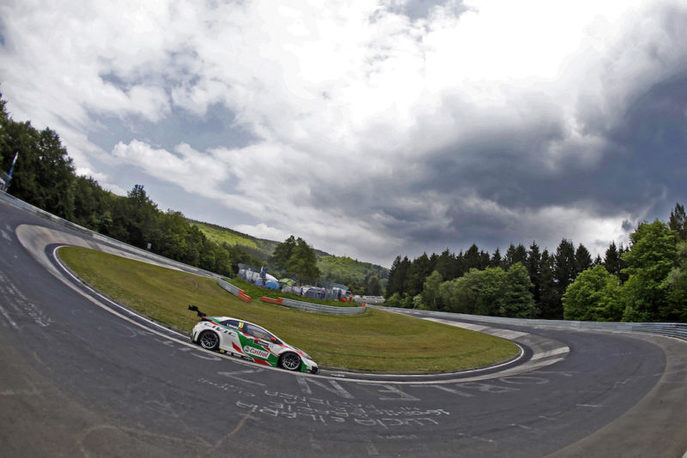WTCC track facts: Nürburgring Nordschleife

The FIA World Touring Car Championship returns to the toughest track of them all, the legendary Nürburgring Nordschleife, this week (25-27 May). Here are 10 facts to whet the appetite.
1: Inspired by Italy's Targa Florio road course, construction work on the original Nürburgring, near the village of Nürburg in Germany's Eifel mountain region, began on 27 September 1925 and was completed in the spring of 1927. It cost around 15 million Reichsmark and needed 3000 workers.
2: The first races were held around the full 28.265-kilometre circuit on 18/19 June 1927. That first race for motorcycles was won by Germany's Toni Ulmen (350cc Velocette), with the following day's car race won by Rudolf Caracciola in the over 5000cc class in a Mercedes Compressor.

3: The original Nürburgring, or Gesamtstrecke, featured 172 corners, sweeping gradient changes and averaged eight to nine metres in width. Louis Chiron set the lap record in his Bugatti Type 35C in the 1929 grand prix in a time of 15m06.1s (112.31km/h).
4: That same year the full circuit was used for the last time in major racing events, with future grands prix to be run on the 22.8-kilometre Nordschleife, and motorcycle and minor races taking place on the smaller 7.7-kilometre Südschleife.
5: It was in 1960 that Sir Jackie Stewart dubbed the Nordschleife ‘The Green Hell' - a nickname that has stuck to this day - with Jochen Rindt declaring it: "Difficult to drive, easy to die." It remains a popular proving ground for car manufacturers and is open to the public to drive at select times of the week.
6: Niki Lauda was the first driver to achieve a sub-seven-minute lap of the Nordschleife when he qualified his Ferrari for the 1975 German Grand Prix in 6m58.60s. In the race his team-mate Clay Regazzoni set a fastest lap record of 7m06.40s.
7: Ironically, the following year it was Lauda who made calls to boycott the grand prix on safety grounds. The race went ahead and the Austrian reigning world champion suffered life-threatening injuries after crashing his Ferrari coming out of the left-hand kink before Bergwerk. The badly burned Lauda famously returned to action just six weeks later at the Italian Grand Prix.
8: That accident, which helped to inspire the making of the hit movie Rush, meant the 1976 Grand Prix was the last to be held on the Nordschleife. The track is now best known for hosting the Nürburgring 24 Hours (ADAC Zurich 24h-Rennen), which was first run in 1970. The event uses the Nordschleife and adjoining modern grand prix circuit, attracting up to 800 professional and amateur drivers in around 200 cars. This year's event takes place shortly after the WTCC aces have completed their two three-lap races.
9: In its 20.81-kilometre form, the late Stefan Bellof still holds the honour of setting the fastest lap ever at the Nordschleife - pole position for the 1983 World Endurance Championship 1000km Nürburgring race aboard a Rothmans-backed Porsche 956C in a time of 6m11.13s. Bellof also set the fastest lap during the race (6m25.91s) before flipping the car at Pflanzgarten.
10: Almost every turn on the Nordschleife tells a story, but a few of the more interesting ones include: Tiergarten (1km) - a former burial ground for animals that died in combat; Schwedenkreuz (5km) - Hans Friedrich Datenberg, a former mayor of Kehlberg and tax collector for Adenau, was hijacked and slain at this point by Swedish soldiers in 1638. A 2.90m cross still stands in his honour; Klostertal (13km) - an Order of the Knights of St John of Jerusalem were base here in the 14th century; Pflanzgarten (17km) - former site of the gardens and crop growing fields of the Earls of Nürburg.
Zdroj: fiawtcc.com
Diskusia k článku
Najnovšie galérie
































 Matej
Matej 
 Richard
Richard  Vladimír
Vladimír